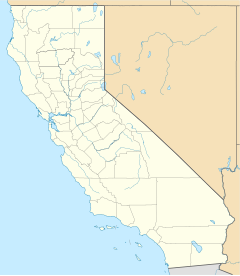SS Winfield Scott
|
Winfield Scott color lithograph
|
|
| History | |
|---|---|
|
|
|
| Namesake: | Winfield Scott |
| Operator: | Pacific Mail Steamship Company |
| Route: | Panama-San Francisco |
| Builder: | Westervelt & MacKay |
| Launched: | 27 October 1850 |
| Out of service: | 2 December 1853 |
| Fate: | Wrecked on Anacapa Island |
| Notes: | Set a record 49-day transit between New York and San Francisco in 1852 |
| General characteristics | |
| Type: | Passenger |
| Tonnage: | 1,291 gross tons |
| Length: | 225 feet (69 m) |
| Beam: | 34.6 feet (10.5 m) |
| Depth: | 29.1 feet (8.9 m) |
| Decks: | 3 |
| Installed power: | 2 × Morgan Iron Works side-lever steam engines |
| Propulsion: | 2 × paddle-wheels assisted by sail |
| Sail plan: | Three masts, square sails |
| Capacity: | |
|
SS Winfield Scott (Steamship)
|
|
| Location | Anacapa Island |
| Coordinates | 34°01′00″N 119°23′00″W / 34.01667°N 119.38333°WCoordinates: 34°01′00″N 119°23′00″W / 34.01667°N 119.38333°W |
| Area | 0.7 acres (0.28 ha) |
| Architect | Westervelt & MacKay |
| NRHP reference # | 87002111 |
| Added to NRHP | 12 September 1988 |
SS Winfield Scott was a sidewheel steamer that transported passengers and cargo between San Francisco, California and Panama in the early 1850s, during the California Gold Rush. After entering a heavy fog off the coast of Southern California on the evening of December 1, 1853, the ship crashed into Middle Anacapa Island. All 450 passengers and crew survived, but the ship was lost.
Winfield Scott has been the object of numerous salvage operations since the crash, and currently rests underwater as part of the Channel Islands National Park and Marine Sanctuary. The Winfield Scott wreck site is listed on the National Register of Historic Places.
The discovery of gold at Sutter's Mill in 1848 brought thousands of people to California in search of fortune until the late 1850s. Since neither the Panama Canal nor the First Transcontinental Railroad had been constructed, people emigrating to California from the Eastern United States had three main routes of passage. They could travel over land, which was expensive and dangerous, or they could sail the roughly 14,000-mile (23,000 km) route around South America. This was more attractive to some but no less dangerous, due in part to the rough waters of the Drake Passage. In addition to the inherent dangers of either route, the journey often took as long as six months to complete.
The third route involved traversing the jungles of the Isthmus of Panama, then departing via the southern coast of Panama. While this cut the length of the sea journey in half, ships to ferry passengers from Panama to San Francisco were not commonplace. As a result, many had to wait months to complete the second half of their journey. To fill this growing need for swift passage from Panama to California, shipbuilding activities increased dramatically.
...
Wikipedia


